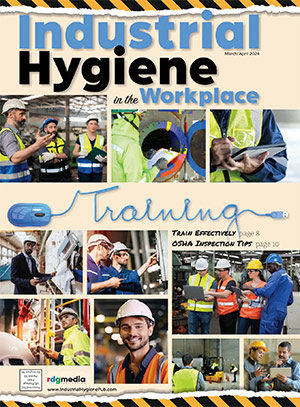NIOSH reports on Oregon confined space incident leaving two dead, five injured
The Fatal Accident Circumstances and Epidemiology (FACE) Project is a service of the National Institute for Occupational Safety and Health (NIOSH), Division of Safety Research (DSR). FACE reports focus primarily upon selected electrical-related and confined space-related fatalities. The purpose of the FACE program is to identify and rank factors that influence the risk of fatal injuries for selected employees.
This FACE report describes how a self-employed contractor (specializing in backflow devices) was in the process of inspecting the backflow valve on a city water line at a sawmill when the accident occurred. The contractor descended into the underground vault which housed the water line and backflow device and collapsed. The shipping supervisor of the sawmill attempted to rescue the contractor and also collapsed.
The self-employed contractor was a one-man operation that according to the state investigators had no safety program or confined space entry procedures. The contractor was licensed and certified by the state to inspect and approve/certify backflow prevention devices.
The sawmill where the accident occurred cuts large timber into marketable sizes that are shipped around the world. The sawmill cuts approximately 7 million board feet of lumber a month and has 110 employees. The sawmill has a written safety policy and holds monthly meetings to discuss safety issues with the workers and management. A collateral duty safety officer conducts walk-through safety inspections and reports safety problems to the management. The sawmill does not have confined space entry procedures. However, the management stated the manhole where the men died is not entered by mill employees.
The independent contractor (the victim) called the superintendent of maintenance to set up a date and time to inspect the backflow device on the water line. The contractor arrived at the sawmill at 3:30 p.m. and proceeded with the inspection, which he had completed annually for the past three years. The steel cover was removed by the contractor and a ladder was lowered into the eight-foot deep vault. There was 14 inches of water in the bottom of the vault.
At 4:00 p.m. a truck driver stopped at the sawmill office to inquire about a load of lumber he was to pick up. When he walked out of the office he noticed the victim’s truck and an open manhole close to where he would have to drive through. He walked over to the open manhole and saw a body in the water at the bottom of the vault. The driver went back to the office and reported a man was down in the vault. The emergency squad was called by the secretary.
After calling the emergency squad, the secretary and truck driver went outside to the manhole. The secretary called for help and the first to arrive at the scene was the shipping supervisor, who entered the vault in a rescue attempt. A few seconds later, one of the maintenance men arrived on the scene and descended into the vault to assist in the rescue. Neither man was wearing respiratory protection and within two or three minutes both men had passed out.
Two policemen arrived at the scene, entered the vault (without respiratory protection), and had to be helped out. The paramedics arrived and attempted rescue (without respiratory protection) and also had to be helped out. The firemen arrived on the scene, donned their breathing apparatus, and went in to remove the three men at the bottom. Two were face down in the water (the contractor and the shipping supervisor) and the third man (the maintenance man) was in a sitting position against the wall, his head was not in the water.
The three men removed from the hole (the contractor, the shipping supervisor, and the maintenance man), the two policemen, and the two paramedics were transported to a local hospital. The contractor and shipping supervisor were pronounced dead on arrival by the attending physician. The maintenance man was hospitalized in serious condition. The two policemen and two paramedics were treated and released.
Recommendation #1: Companies contracting to have a service performed on their property should implement and enforce a safety program to be followed by the contractor.
Discussion: Companies contracting out work to be performed on their property should require as part of the contract, the contractor adhere to all safety rules. Particularly when hazardous tasks such as confined space entry are contracted out, outside contractors should be required to comply with a written safety policy that includes safe work procedures, and these requirements should be enforced by the company.
Recommendation #2: If the employer has any confined spaces, comprehensive policies and procedures should be developed for confined space entry, where confined space entry is required, in accordance with OSHA’s confined space standard.
Discussion: Per OSHA’s standard, all employees who are required to work in confined spaces must be aware of potential hazards, possible emergencies, and specific procedures to be followed. Prior to entry into a confined space, the following should be addressed:
- Is entry necessary? Can the task be completed from the outside?
- Has a permit been issued for entry?
- Has the air quality in the tank been tested?
- Oxygen supply at least 19.5%
- Flammable range less than 10% of the lower flammable limit
- Absence of toxic air contaminants
- Have employees and supervisors been trained in selection and use of personal protective equipment and clothing?
- Protective clothing
- Respiratory protection
- Hard hats
- Eye Protection
- Gloves
- Life lines
- Emergency rescue equipment
- Have employees been trained for confined space entry?
- Is ventilation equipment available and/or used?
Share on Socials!
OSHA cites NJ hospital
AIHA Joins National Safety Council SAFER Task Force to Ensure Employee Safety Through the Pandemic
Zyter Collaborates with Zurich North America, Qualcomm and Everguard to Enhance Construction Safety
Leaders in Industrial Hygiene
Council for Accreditation in Occupational Hearing Conservation (CAOHC)
Subscribe!
Sign up to receive our industry publications for FREE!







